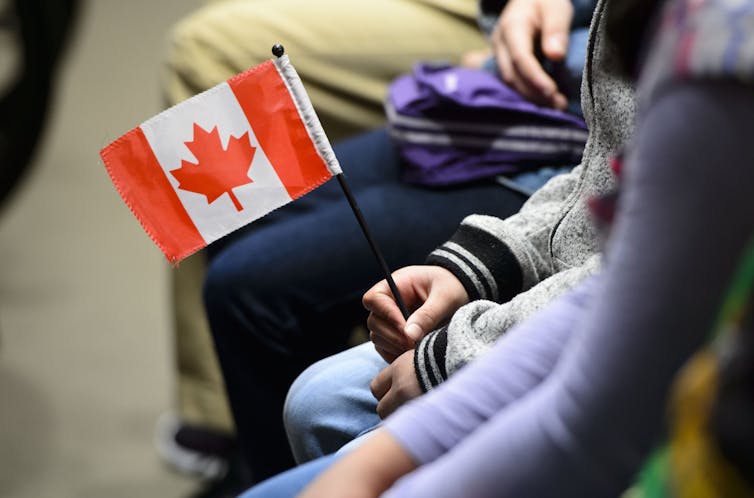
Welcoming and including newcomers is increasingly becoming an important part of creating vibrant cities.
Canadian municipalities like Toronto, London, Winnipeg and Halton Region open their doors to a large number of newcomers.
These communities recognize the importance of digital initiatives like welcome portals, pre-arrival services, web/mobile phone applications and online newcomer guides in creating a welcoming environment. The mobility restrictions imposed by the COVID-19 pandemic has heightened the need for these online services and has even spurred digital adoption among migrants themselves.
Settlement agencies, however, still have work to do to ensure they’re offering enough online services to newcomers, including using online channels to communicate with them before they arrive in Canada.
Digital divide
Make no mistake — some newcomers may be excluded because of pre-existing inequalities in access to internet services or devices in their home countries. Demographics will determine whether they have access to digital services.
Those include age (young people use the internet more often than older generations), gender, location (including whether they come from places in their home country with poor internet service or expensive or absent broadband services), household wealth, education levels and migration status (some refugees and asylum-seekers depend on internet service and social media platforms to navigate the journey between home and host country).
This is known as the digital divide. For host countries like Canada, unequal access to digital services means another layer of inequality that must also be addressed by settlement services. Failure to do so could further exacerbate what’s known as digital poverty.
Newcomers who do go online must be skilled enough to navigate various platforms, persistent misinformation and hate speech on social media.
This requires them to obtain vital and accurate information. They can and do. Refugee youth from the Middle East and East Africa, for example, use various platforms like Facebook, WhatsApp, Instagram, Snapchat and Viber before and after coming to Canada to communicate and get information.
Similar examples are found among immigrants from Bangladesh, refugees from Syria and the Tamil diaspora.
A 2018 report found that newcomers who used pre-arrival settlement services were more informed about where to go to find more information after they arrive, they knew how to get their professional credentials evaluated and they had an overall better understanding of Canadian workplace culture.
They also actively looked for work, while some enrolled in further education to upgrade their skills.

New tech transformation
Before coming to Canada, migrants often have limited sources of information about life here, relying mostly on their social networks.
Technology allows potential newcomers — with the assistance of friends and family on social media — to make informed migration decisions and improve their search for job market information.
Even before the pandemic, 67 per cent of newcomers to Canada were using social media, similar to Canadian-born usage rates (68 per cent).
Newcomers were mainly using it to learn English, get local news, learn about the Canadian culture, connect with family and friends, find job market information and for further education opportunities.
Nonetheless there can be some negative impacts on newcomer integration due to social media, meaning there’s a role for newcomer settlement service agencies to build greater trust into virtual spaces.
Some platforms can potentially inhibit integration if they limit interactions with local citizens. Chinese immigrants using WeChat, for example, interact a lot more with other Chinese immigrants and much less with Canadian-born citizens. This can delay how newcomers learn about Canadian social practices.
Social media can also create privacy and security challenges for newcomers that leave them vulnerable to fraud, identity theft and misinformation.
Searching for settlement services
Settlement agencies don’t just deliver services to newcomers. They also identify the best possible channels to reach them and provide them with the necessary information to make settlement in Canada a seamless process.
But a 2021 study found that although newcomers were using the internet for many things, few were using it to look for settlement services. There’s still a gap when it comes to helping newcomers with better targeted online services.
The federal government is investing in pre-arrival settlement service delivery so that newcomers are prepared for life in Canada.
There are currently 147 active settlement program initiatives being funded by Immigration, Refugees and Citizenship Canada. These projects are valued at over $250 million, with a goal of finding new ways of delivering services to newcomers.
About 45 per cent of these funds went towards 17 pre-arrival settlement service initiatives that virtually prepare newcomers for life in Canada. The initiatives provide employment-related services, orientation services, needs assessment and referral services.
Pre-arrival initiatives have seen success in digital learning, counselling and community-building, including tackling xenophobia and misinformation, skills training and starting an online business.

The initiative taken by Immigration, Refugees and Citizenship Canada and local governments are in step with the embrace of digital technologies and the internet among newcomer communities and the demand for more pre-arrival information.
But more must be done to increase awareness among newcomers about the services provided by settlement agencies.
This is an area of focus for the project Virtual Bridge, which aims to provide research and tools for settlement service agencies to improve their online communications and service delivery. Given the technological aptitude of so many newcomers to Canada, online outreach and services are critical to ensuring their successful resettlement.
Stein Monteiro receives funding from Immigration, Refugees and Citizenship Canada.
Nevyn Pillai does not work for, consult, own shares in or receive funding from any company or organisation that would benefit from this article, and has disclosed no relevant affiliations beyond their academic appointment.
This article was originally published on The Conversation. Read the original article.







